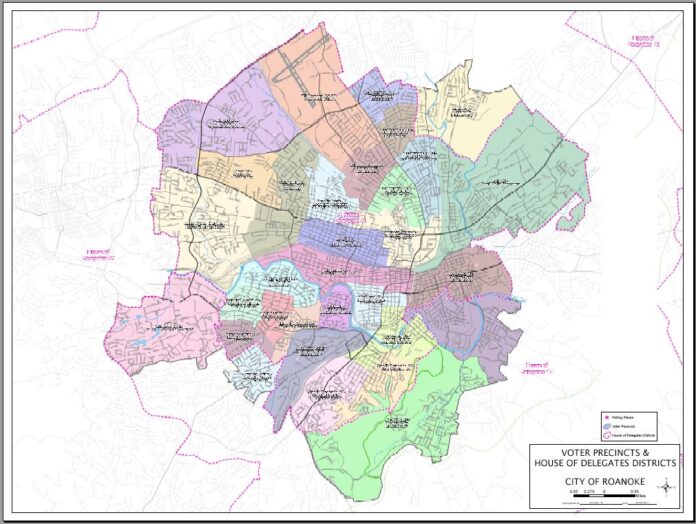
Following a public hearing that lasted more than an hour, members of Roanoke City Council voted 4 to 2 to consider a second plan for cutting the number of precincts in the city.
Councilman David Trinkle and Court Rosen voted no, saying there’s been enough discussion and they wanted to vote on the current proposed plan. Councilman Ray Ferris was absent.
A task force met last year and came up with a 20 precinct plan. But Councilman Bill Bestpitch says the fundamental reason the problem is being addressed is still missing: equal access to the ballot.
Bestpitch spoke about the disparity of registered voters between the smallest proposed precinct and the largest in the 20 precinct plan which he said is more than double, so he’s come up with a 21 precinct plan.
Mayor David Bowers countered that if a precinct is too large, why not just divide that one precinct.
Bestpitch’s “Plan B,” as it is being called, will be advertised by the City Attorney’s office and along with the 20 precinct plan, will be addressed again in a public hearing November 17th.
One of the speakers during the public hearing was Brenda Hale, President of the Roanoke NAACP. She was worried about having enough machines at each polling place to ensure a fair election, and wanted “true curbside voting” to make sure the elderly and disabled had access to the polls. “Attention should be [given] that this should be a fair and equitable allocation,” she said.
Cindy Hilton echoed Hale’s concern about transportation for voters. She also worried about Williamson Road precinct 34 which as proposed would be divided into three separate stations, making it more difficult for voters to get to the polls. She highlighted the Rockland Avenue and Hunt Avenue areas in particular.
“If you walk that terrain, unless we’re going to roll down a hill and go in the creek, I don’t see my seniors making it to the polling station,” said Hale.
City Attorney Callaghan replied, “What was dictated by both the task force and our work in terms of refining it was to comply with what state code requires – compact, contiguous precincts consisting of not less than 500 voters and not more than 5,000 voters.” He said they looked at bus routes and the accessibility of polling places in developing the precincts.
Dan Callaghan said the matter must be decided by December 31st, to go into effect next year. If not, the change won’t take place until 2016. Bowers cautioned against waiting that long because there would be four elections in 2016; the Presidential Primary in February, City Council in May, Federal offices in June, and the November General Election.
When reducing the number of precincts was first discussed in 2011, the goal was to save the city money. Callaghan said the current plan won’t save money; it’s more efficient but revenue neutral. Bowers said if the goal was to save money, Council should combine the City Council elections with the General Election, which he said would save $30,000 to $40,000.
-Beverley Amsler


